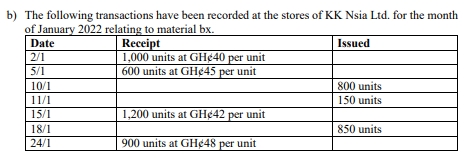- 5 Marks
ICMA – Nov 2024 – L1 – Q5b – Budgeting Models and Systems
Explain the benefits of GIFMIS to the government of Ghana.
Question
Efforts to improve Public Financial Management (PFM) Systems in Ghana led to the Ghana Integrated Financial Management Information System (GIFMIS), which is an adaptation of the Integrated Financial Management Information System (IFMIS). The rationale of GIFMIS is to establish an integrated ICT-based PFM system in Ghana at national, regional, and district levels.
Required:
State FOUR benefits of GIFMIS to the government of Ghana.
Find Related Questions by Tags, levels, etc.
Report an error

